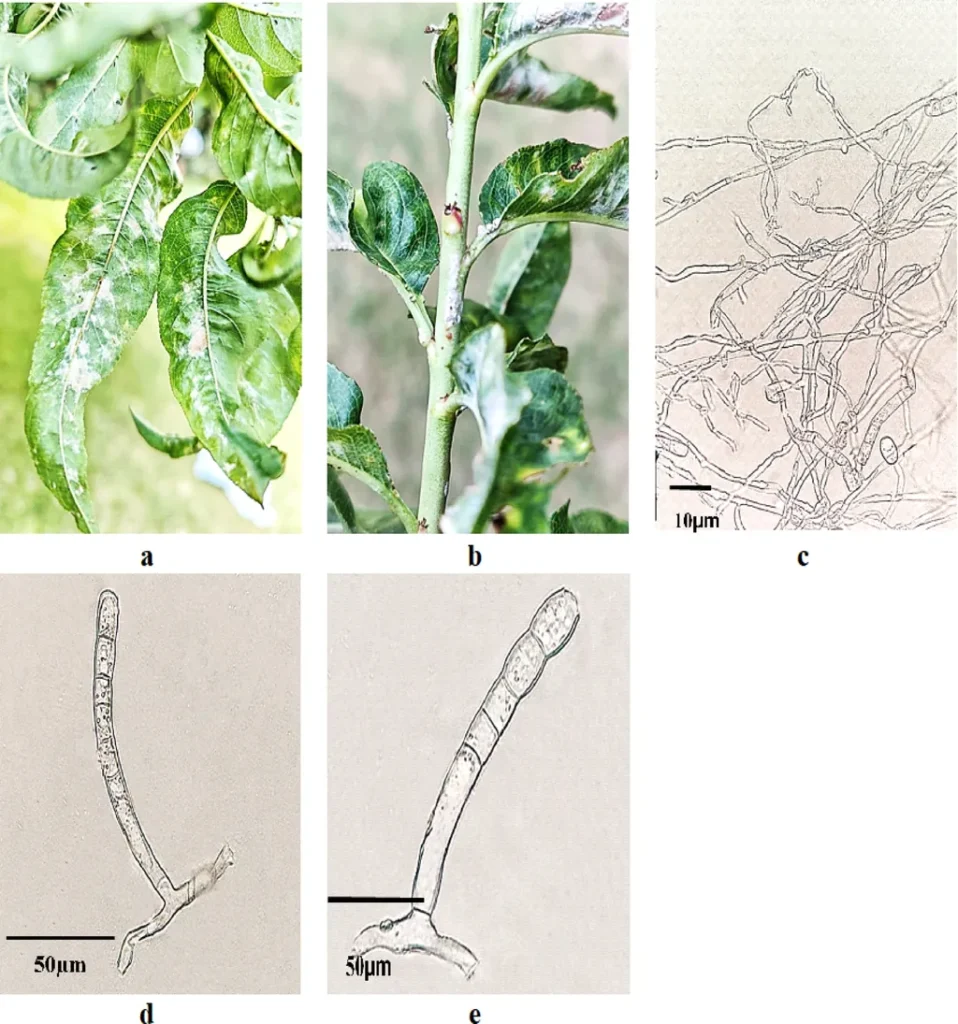In the verdant valleys of Kashmir, a team of researchers has uncovered new insights into a persistent agricultural foe: powdery mildew. This fungal disease, a bane to farmers worldwide, has been meticulously studied by Sana Surma and colleagues from the Division of Plant Pathology at Sher-e-Kashmir University of Agricultural Sciences and Technology of Kashmir. Their findings, recently published in *Scientific Reports*, shed light on the specific fungal species affecting stone fruits in the region, with potential implications for global agriculture.
Powdery mildew is a ubiquitous threat, affecting a wide range of crops, including stone fruits like peach, plum, and apricot. The precise identification of the causal fungi is crucial for effective disease management. Surma and her team collected 75 powdery mildew samples from these stone fruits across the Kashmir valley. Through a combination of morphological analysis and molecular characterization using the ribosomal DNA internal transcribed spacer (ITS) region, they identified three distinct species: *Podosphaera pannosa* on peach, *Podosphaera ampla* on apricot, and *Erysiphe prunastri* on plum.
The discovery of *P. ampla* on apricot is particularly noteworthy, as it marks the first report of this species in Asia. Similarly, *P. pannosa* on peach and *E. prunastri* on plum are new records for India. “This research is a significant step forward in our understanding of powdery mildew in stone fruits,” Surma explained. “Accurate identification of the fungal species is the first step in developing targeted control strategies.”
The commercial impact of these findings cannot be overstated. Powdery mildew can cause significant yield losses and reduce the marketability of stone fruits. By identifying the specific fungal species involved, farmers and agricultural practitioners can implement more effective and precise control measures. This could include the use of targeted fungicides, resistant cultivars, or integrated pest management strategies.
Looking ahead, this research opens the door for further studies on the biology and ecology of these fungal species. Understanding their life cycles, host specificity, and environmental preferences can lead to the development of more sustainable and efficient control methods. “Our goal is to provide practical solutions that can be easily adopted by farmers,” Surma added. “This research is just the beginning, and we hope it will pave the way for more innovative approaches to combat powdery mildew.”
As the agricultural sector continues to grapple with the challenges posed by fungal diseases, the work of Surma and her team offers a beacon of hope. Their findings, published in *Scientific Reports*, not only advance our scientific understanding but also hold the promise of tangible benefits for farmers and the broader agricultural community. In an era where food security is paramount, such research is invaluable, shaping the future of crop protection and sustainable agriculture.

